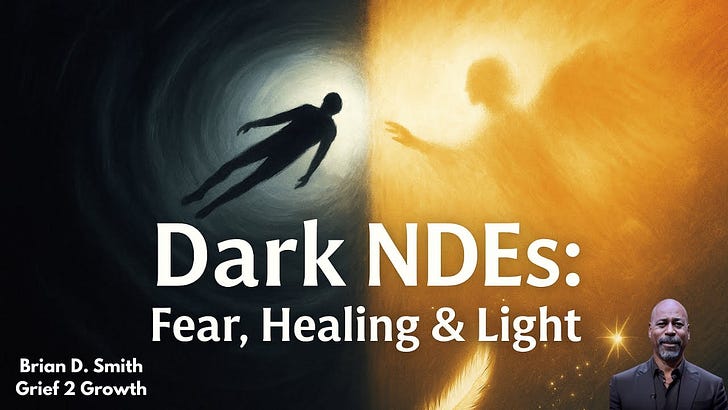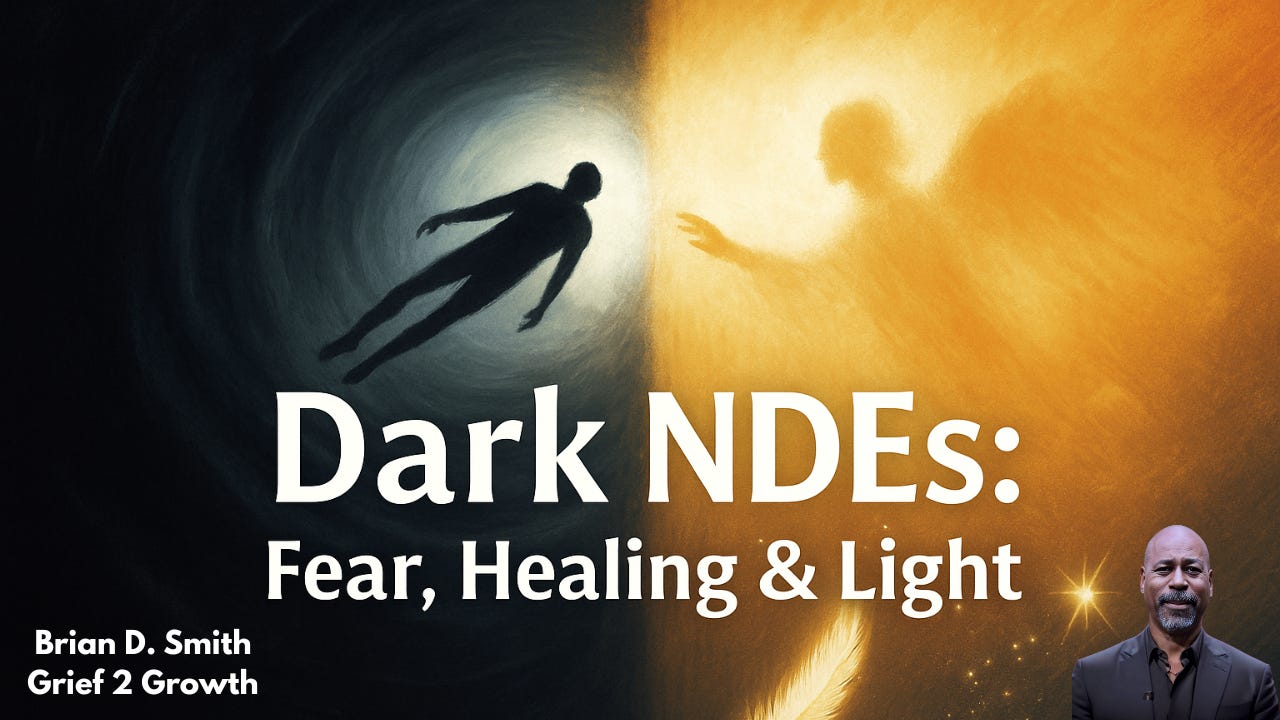When we talk about near-death experiences (NDEs), most of us imagine the tunnel of light, the overwhelming peace, the loving presence. Those stories are comforting, illuminating, and full of hope. But there's another side to this realm of human experience that we don't talk about as often: the so-called "dark" or "less than positive" NDEs.
I hesitate to use the term "negative" because it implies something bad, something to fear or reject. But what if these difficult, even harrowing experiences are just as meaningful? What if they, too, are here to teach us?
As someone who loves to explore the beautiful and serene aspects of NDEs, I also feel a responsibility to acknowledge the full spectrum. I’ve spoken with people like Dr. Raj Parthi and Howard Storm—individuals whose experiences were dark, disorienting, even terrifying. And yet, they emerged with profound transformations. Their stories challenge the idea that only light-filled NDEs are valid or spiritually valuable.
One consistent pattern stands out: the moment someone in a dark NDE reaches out for help, they are rescued. The suffering doesn’t continue indefinitely. That, in itself, debunks the notion of an eternal hell. If someone was destined to fall forever, they wouldn’t be here to tell us about it.
I recall one story of a woman who described falling endlessly in darkness, convinced it would last forever. And yet, she’s here now, sharing her story. That fact alone calls into question the permanence of such realms. These experiences appear to be highly dynamic—responsive, even—shifting the moment the experiencer is ready or willing to receive help.
Chico Xavier’s Astral City (also known as Nosso Lar) tells a similar tale. In this story, the protagonist finds himself in a gray, hell-like zone after death—not because he was condemned, but because his state of mind and spiritual condition weren’t yet aligned with peace. Angels, or messengers of light, appear to those ready to move on, emphasizing that no one is abandoned, no matter where they begin.
The same is echoed in the writings of Emanuel Swedenborg, who had a strong Christian background that influenced his descriptions of the afterlife. He speaks of different levels of existence, where each soul gravitates to the environment most aligned with their inner disposition. And importantly, these places are not forced upon us. If a soul isn't comfortable in a heavenly realm—say, due to a selfish or greedy nature—it won't be placed there. The afterlife, then, seems more like a continuum of choices and resonance than a system of reward and punishment.
So why do these dark NDEs happen at all? Perhaps they serve as wake-up calls. Maybe they reflect internal states that have gone unacknowledged. Or maybe, just maybe, they are expressions of the soul’s learning curve—challenges that provoke deep insight, compassion, and change. They are not divine retributions; they are invitations.
And here's the irony: I've heard of people who had what we would call "positive" NDEs—full of light and love—who struggled deeply afterward, unable to reconcile the beauty they experienced with the pain and mundanity of everyday life. Meanwhile, others who endured harrowing NDEs returned with renewed direction, humility, and a fierce desire to live more fully and kindly. It defies our expectations, but reinforces an important truth: the emotional tone of the experience does not determine its spiritual value.
We must be cautious about how we interpret these accounts. A dark NDE is not a prophecy or a punishment. It’s not a cosmic verdict. It’s a chapter in a soul’s ongoing story. All NDEs—whether luminous or shadowed—offer insights into who we are, what we carry, and what might be possible if we listen.
Let’s resist the temptation to turn fear into theology. Let’s honor every experiencer's story with curiosity, not judgment. And let’s remember: even in the darkness, there is the potential for light.
I know there are a lot of newsletters you can support, and subscription fatigue is real. If you’d like to leave a one-time donation, it would be very much appreciated. Click the image below to leave a tip.






